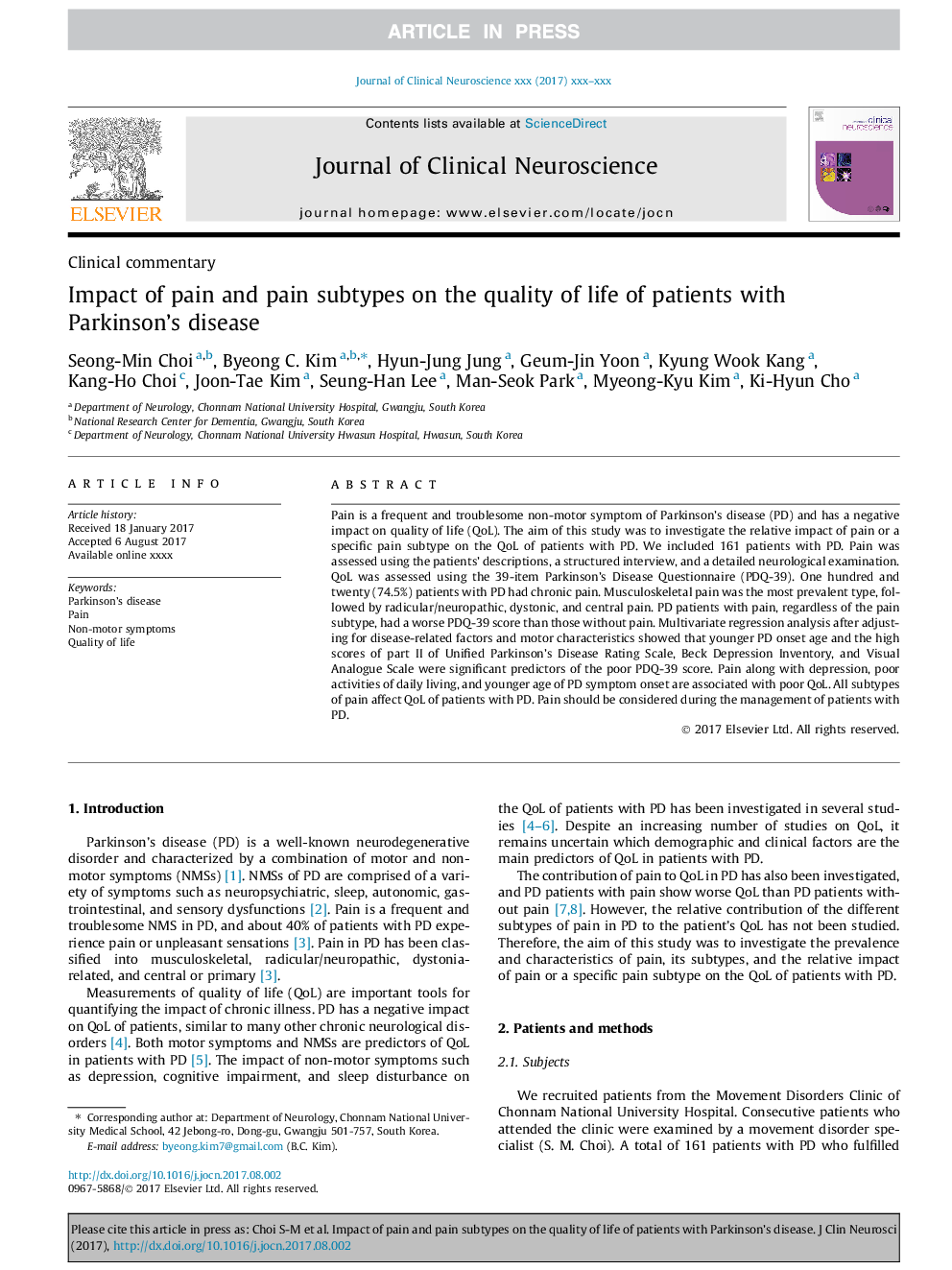| Article ID | Journal | Published Year | Pages | File Type |
|---|---|---|---|---|
| 8685520 | Journal of Clinical Neuroscience | 2017 | 5 Pages |
Abstract
Pain is a frequent and troublesome non-motor symptom of Parkinson's disease (PD) and has a negative impact on quality of life (QoL). The aim of this study was to investigate the relative impact of pain or a specific pain subtype on the QoL of patients with PD. We included 161 patients with PD. Pain was assessed using the patients' descriptions, a structured interview, and a detailed neurological examination. QoL was assessed using the 39-item Parkinson's Disease Questionnaire (PDQ-39). One hundred and twenty (74.5%) patients with PD had chronic pain. Musculoskeletal pain was the most prevalent type, followed by radicular/neuropathic, dystonic, and central pain. PD patients with pain, regardless of the pain subtype, had a worse PDQ-39 score than those without pain. Multivariate regression analysis after adjusting for disease-related factors and motor characteristics showed that younger PD onset age and the high scores of part II of Unified Parkinson's Disease Rating Scale, Beck Depression Inventory, and Visual Analogue Scale were significant predictors of the poor PDQ-39 score. Pain along with depression, poor activities of daily living, and younger age of PD symptom onset are associated with poor QoL. All subtypes of pain affect QoL of patients with PD. Pain should be considered during the management of patients with PD.
Related Topics
Life Sciences
Neuroscience
Neurology
Authors
Seong-Min Choi, Byeong C. Kim, Hyun-Jung Jung, Geum-Jin Yoon, Kyung Wook Kang, Kang-Ho Choi, Joon-Tae Kim, Seung-Han Lee, Man-Seok Park, Myeong-Kyu Kim, Ki-Hyun Cho,
